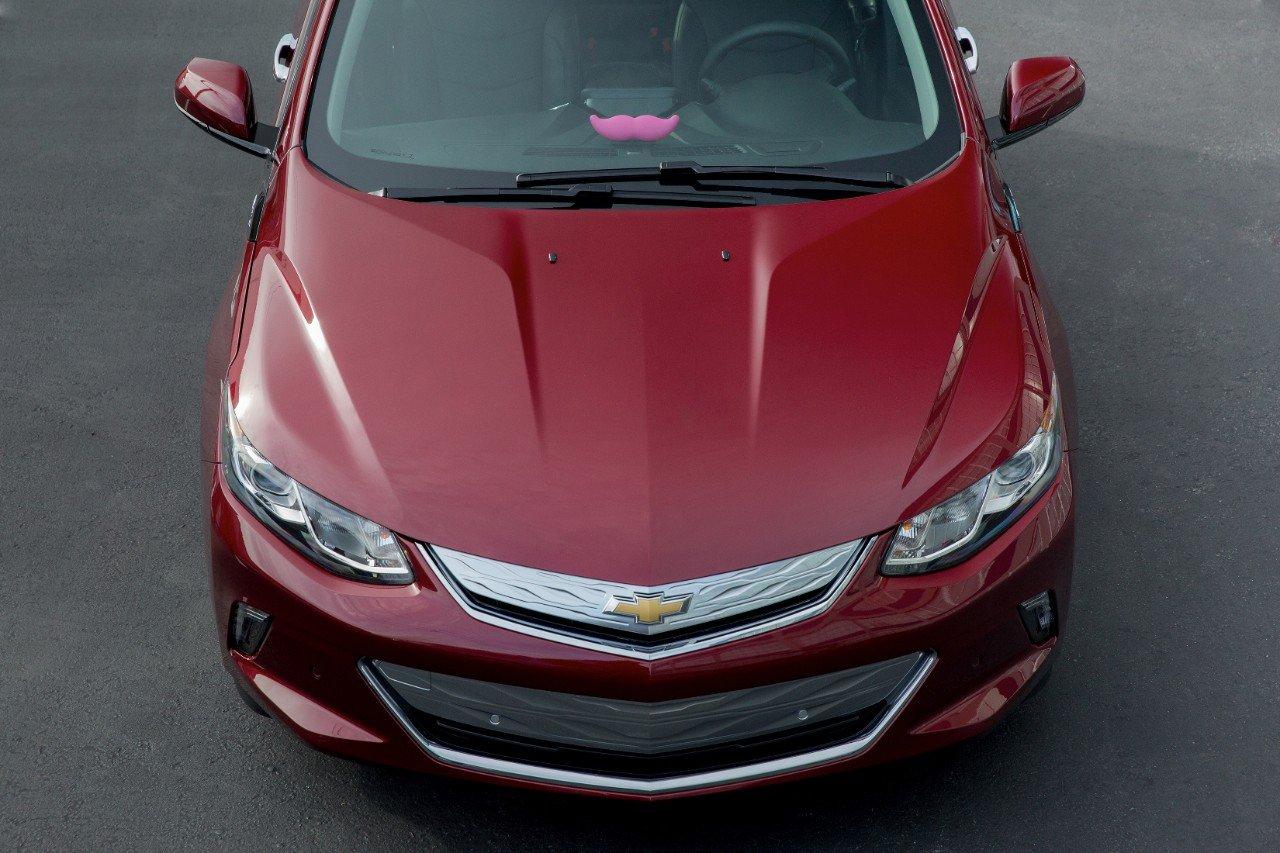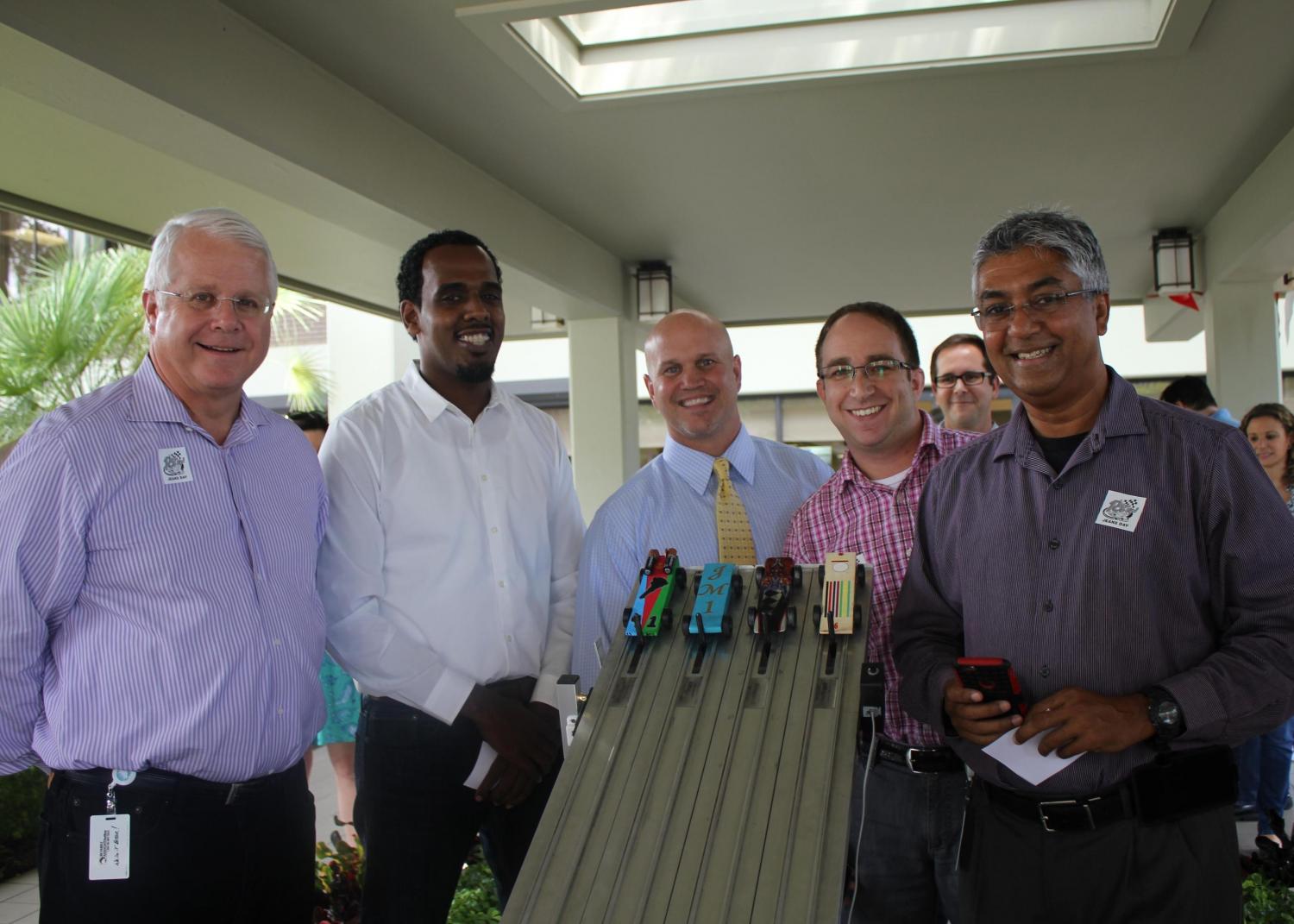British Columbia’s Carbon Tax is Working


A few weeks ago, the global powers that be wrapped up the climate summit (COP21) in Paris, coming out of it with a treaty that some say won’t be enough to prevent a global temperature rise of less than 2 degrees Celsius. That’s the level that climate scientists say we don’t want to exceed in order to avoid the worst impacts of climate change.
Whether or not the COP21 outcome is enough, successful examples of greenhouse gas (GHG) emissions reductions are already underway. British Columbia, the third most populous province in Canada, is one of them. The province enacted a carbon tax in 2008. How successful has the tax been? It decreased emissions 3.5 times faster than the rest of Canada, according to a new report by Carbon Tax Center (CTC).
British Columbia’s carbon tax began over seven years ago with the province’s Carbon Tax Act. It started on July 1, 2008 at $10 (Canadian) per metric ton of carbon and increased by $5 per ton in each of the following four years, reaching its current level of $30 per ton in July 2012. Its current level equals around $20.50 per U.S. short ton. CTC predicts that British Columbia’s emissions will continue to decrease.
The CTC report shows a 12.9 percent decrease in British Columbia’s per capita emissions from 2008 to 2013, compared to 2000 to 2007, while there was only a 3.7 percent decrease per capita for the rest of Canada during the same time period. “This suggests that the carbon tax caused emissions in the province to be appreciably less than they would have been, without the carbon tax,” the report's authors state.
Some critics of a carbon tax say it will harm the economy. The CTC report found that the carbon tax in British Columbia “does not appear to have impeded overall economic activity” in the province.
An assessment released in May by environmental economists at Duke University and University of Ottawa also praised British Columbia’s carbon tax. The province “has given the world perhaps the closest example of an economist’s textbook prescription for the use of a carbon tax to reduce [greenhouse gas] emissions,” they wrote in their the assessment. Or, as the CTC report puts it, the carbon tax is the “most comprehensive and transparent carbon tax in the Western Hemisphere, if not the world.”
“The climate crisis is just that, a crisis. We need policy solutions that harness the power of price signals, and British Columbia’s carbon tax offers a promising example that other regions can and should adopt,” Charles Komanoff, director of the Carbon Tax Center and lead author of the report, said in a statement. “Not only do the numbers indicate that taxing pollution has been effective at curbing greenhouse gas emissions, but they highlight how politically feasible such a tax is, given that it has had no negative impact on economic growth.”There are some caveats. The emissions data excludes those from electricity production, which is just a minor category for British Columbia, as the province obtains most of its power from hydro-electricity. However, electricity production is a major emissions category for the rest of Canada. There is little fossil fuel combustion used for generation electricity in British Columbia. In 2007, the year before the tax began, less than 3 percent of province-wide carbon emissions from fossil fuel combustion were from electricity generation. By contrast, the amount across Canada in 2007 was 32 percent.
The tax is also modest. The final carbon tax rate, reached in July 2012, equates to only 20 cents (U.S. dollars) per gallon of gasoline. The tax increment is less than 6 percent of the pre-tax retail gas price in the province.
But from a political view, the tax “has been a solid success.” Opinion polls found that the number of residents who dislike the tax has decreased over time. The CTC found that the favorable reception is probably due to how the tax revenues are handled. The proceeds fund over a billion dollars a year of cuts in the province’s individual and business taxes. A tax credit adds aid to low-income households. And both provisions are “politically popular.”
The tax is catching on in other parts of Canada. In November, the province of Alberta announced that it is committed to enacting a carbon tax similar to British Columbia’s. Alberta’s carbon tax will start in 2017 at $20 per metric ton and increase in 2018 to $30, the current level of British Columbia’s tax.
Photo: Flickr/futureatlas.com
Want To Be in the Know? Add These Conferences to Your Calendar for 2016


The calendar is rolling over to a new year, and as we round this corner we’re excited to see what social innovations will occur in 2016. It’s a great time to plan which conferences you want to attend to learn what’s new in the world of sustainability and snag early-bird discount tickets.
In chronological order, here are my favorite conferences coming up this year.
1. Charities @ Work
March 28-30, New York, New YorkThis conference focuses on employee engagement in corporate citizenship. It’s a small, intimate gathering where honest conversations are exchanged. It's a great place to go if your job is to manage employee volunteer or donation programs.
2. Skoll World Forum
April 13-15, Oxford, EnglandNearly 1,000 influential social entrepreneurs, thought leaders and strategic partners will join this forum. The mission, according to the website, is to “accelerate the impact of the world’s leading social entrepreneurs by uniting them with essential partners in a collaborative pursuit of learning, leverage, and large-scale social change.”
To attend, you must be invited due to limited capacity. However, you can always watch the Forum’s live stream, and session videos will be posted to Skoll.org immediately after the forum. I wasn’t able to attend this year, but I hear it’s fantastic.
3. Sustainable Brands
June 6-9, San Diego, CaliforniaSustainable Brands has 11 conferences around the world this year in Sydney, Cape Town, Barcelona, Istanbul, San Diego, Rio, Copenhagen, Buenos Aires, Bangkok, Kuala Lumpur, and a New Metrics conference in Boston. If you only pick one conference in the U.S. to attend this year, you might want to choose this one since it is by far the largest gathering.
4. Verge
Sept. 19-22, Santa Clara, California“Topics span a range of technologies and trends at the intersection of technology and sustainability: big data, the cloud, smart grid, the Internet of Things, intelligent buildings, connected vehicles, the future of cities, the sharing economy, open-source systems and more,” according to the website.
5. SXSW Eco
Oct. 10-12, Austin, TexasThis was my favorite conference this year. The focus is on “accelerating impact through design, technology and world-changing ideas.” Two competitions are held every year. First, the Startup Showcase, which “highlights entrepreneurial innovation in a slew of categories including cleantech, smart cities and energy.” Second, the Place by Design competition, which is used to provide "insight and inspiration for architects, urbanists and policy makers who are building and revitalizing cities and communities." I have to say though that I don’t fall into any of those categories and I was still incredibly inspired.
6. Net Impact
Location and dates to be determinedThe Net Impact Conference is aimed at the next generation of sustainable leaders. Last year, over 2,000 students attended and heard leaders such as Chelsea Clinton speak. The students dress in business attire and most carry portfolios with resumes to give recruiters at booths.
7. Sustainable Brands – New Metrics
Nov. 14-16, 2016, Boston, MassachusettsThis conference will differ from the other Sustainable Brands conference in the U.S. in that it will focus on “measuring and quantifying entirely new forms of business risk and value.” Sustainability leaders will discuss “innovative tools, ideas and methodologies that capture tangible business value and translate it into corporate financial performance.” I haven't attended this conference, but if it's produced as well as the main Sustainable Brands conference, it should be great!
*Photo credit: by Bùi Linh Ngân via Flickr
FTC Fines Nordstrom, JCPenney for False Bamboo Labeling, But is it Enough?


Retailers Nordstrom, Bed Bath & Beyond, JCPenney and Backcountry.com are being forced to pay the Federal Trade Commission $1.3 million in fines this month for falsely advertising textile products as bamboo when they are in fact composed of rayon. As consumer spending trends toward the purchase of more environmentally-friendly products, the FTC argues that the retailers knowingly deceived customers into believing that they were making solid, ethical purchasing decisions.
“It’s misleading to call bamboo that has been chemically processed into rayon simply 'bamboo,’” said Jessica Rich, director of the Bureau of Consumer Protection, in a statement regarding the penalty. “It’s important for [consumers] to know that textiles marketed as environmentally-friendly alternatives may not be as ‘green’ as they were led to believe.”
According to the settlement charges, Bed Bath & Beyond will pay $500,000; Nordstrom will pay $360,000; JCPenney will pay $290,000; and Backcountry.com will pay $150,000 for allegedly violating the FTC Act and the agency’s Textile Rules.
In 2009, the FTC charged four textile companies for falsely claiming their products were made of 100 percent bamboo fibers or contained sustainably-sourced bamboo. Then, in 2010, the government agency distributed letters to Bed Bath & Beyond, Nordstrom, JCPenney and Backcountry.com warning them that they too were at risk of being fined for false and unsubstantiated labeling claims. To no avail, the retailers went on with business as usual, refusing to change their labeling practices, while scraping up potentially millions of dollars in product sales over the last five years.
Companies that mislead customers by making unsubstantiated “green” claims in the marketplace has been an ongoing problem. Consumer protection against false labeling starts with consumer education. Marketer’s are well aware that the average consumer, despite being much more conscious and susceptible to reading labels before making a purchase, isn’t always well-versed on the latest in textile manufacturing processes.
Greener options for rayon do exist and are typically labeled as Lyocell or Tencel, which are made in a closed-loop process from bamboo cellulose with less harmful chemicals.
However, traditional rayon derived from bamboo -- the material the brands are being charged for mislabeling -- is hardly eco-friendly. In fact, the extraction process is time-consuming, expensive, wastes copious amounts of water and uses heavy doses of environmentally toxic chemicals that when released pollute the air. After an arduous manufacturing process, there is very little bamboo left in the final rayon product. Calling the final product either bamboo or eco-friendly is a misnomer.
The complaint against the four retailers include detailed descriptions of products scrutinized under the false labeling:
- Bed Bath & Beyond: The complaint alleges the company (sometimes through its BuyBuy Baby subsidiary) mislabeled dozens of textiles as bamboo, including Aden + Anais Bamboo 3-Pack Muslin Swaddles and Bamboo Blend Napkins.
- Nordstrom: According to the complaint, the company sold mislabeled products online and in its stores, including a Gypsy 05 Bamboo Racerback Hi-Lo Dress and Degree Six Clothing – The Bamboo Long Sleeve Tee.
- JCPenney: The lawsuit charges that the company deceptively promoted products as bamboo, including Muk Luks 4-pack Men’s Bamboo Socks. The FTC also says the company falsely claimed bamboo gave the products anti-microbial properties.
- Backcountry.com: The complaint alleges that the online retailer deceptively marketed products as bamboo, like men’s Bridgedale Bamboo Crew Sock, sometimes with anti-microbial claims the FTC says were misleading.
Image credit: Flickr/Mike Mozart
Baby-Boomer Weight Crisis is Crushing Millennials With Taxes and Debt


“Telling it like it is,” was sports journalist Howard Cosell’s mantra, which he preached to the baby boomer generation that joined him in making Monday Night Football a national party night. In the spirit of “telling it like it is,” this is what the numbers now say say about the baby boomer generation: Medicare (which baby boomers are signing up for in record numbers to avoid soaring health care costs) is projected to spend 72 percent more for the remaining lifetime of a typical 65-year-old in 2030 than a 65-year-old in 2010. Obesity is a major reason why. Almost twice as many baby boomers will suffer from obesity in 2030 compared to 2010.
Reducing the national debt and government fiscal responsibility is a major baby boomer focus. Yet Social Security and Medicare now represent two-thirds of the annual federal budget. Medicare alone equals about 25 percent of all government spending. The “tell like it is” numbers are squarely pointing the finger at the boomer generation as the cause of spiraling government expenditures. Their lifestyle, and its unintended weight-related health consequences, is the greatest threat to our country’s ability to balance its budget and the future prosperity of our children and grandchildren.
The baby-boomer weight crisis
Today 72 percent of boomer men and 67 percent of boomer women are overweight or obese. By 2030, this generation will experience almost double the incident of having all three chronic conditions of hypertension, heart disease and diabetes. These three chronic health conditions are tied to this generation’s weight gain. The boomer generation is in a weight crisis that is about to go over the health care cliff.
Baby-boomer health care is creating a national financial crisis
The baby-boomer weight crisis is rapidly moving past their burden of buying plus-size clothing. Modern medicine will keep them alive longer than previous generations even with their increased need for care due to their weight gain. Their increased health care cost will push America into a debt crisis. One driver will be paying for extended medical care to medicate the life choices made by the boomer generation. The second driver will be the increased gross amounts the boomer generation will be paid from Social Security by living longer.
Here’s “the tell it like it is” projection for Medicare costs. Medicare spending is projected to grow four times faster between now and 2024 than it grew between 2010 and 2014. Medicare spending is projected to grow almost a full percentage faster than our country’s economy.
The boomer generation’s lifetime of weight-gaining choices will force the millennial generation to pay higher taxes to sustain government spending. This tax burden will be a significant negative factor in terms of economic growth and a burden on the millennial generation’s ability to realize their American Dream.
What millennials must do to preserve their future
The numbers are stark. For the next 30 years, it is not enough for the millennial generation to adopt sustainable best practices. Their actions will push our national policy and economy toward sustained economic growth, improved human health and environmental sustainability. But to actually realize these results will require boomer generation engagement.
This is because the boomer generation continues to be large in numbers with behaviors that are still too unsustainable. The reality is that sustainability for our economy, human health and environment cannot be achieved without boomer generation engagement. What every millennial must do is engage the boomer generation to help them adopt sustainable life choices.
It can be done. My millennial generation kids did it for me. But it was not easy. We boomers are very sure of ourselves and self-focused. Appreciating how hard it will be for my generation to change, I wrote "The Boomer Generation Diet Book."
Market researchers define the boomer generation as the “have it all” generation. The Boomer Generation Diet explains, in their terms, how they can lose weight, have fun and live more+. Here’s what Jen Boynton, editor in chief of TriplePundit, says about the book:
“Written in Bill Roth’s lovable, relatable tone, 'The Boomer Generation Diet' is a must-read for any boomer who is looking to jumpstart their health and have fun at the same time. I hope my parents read it!”
Millennials, you have tried taking them to Chipotle. You have tried lecturing them about not drinking Diet Coke. Keep trying, but consider giving them a book written for them by one of them. It will open their eyes, and hopefully their hearts, before it is too late for them and for you.
Image credit: Bill Roth
GM-Lyft Agreement a Big Step Toward the Future of Mobility


For decades the Big Three automakers were the big dogs on the American landscape, with consumers the proverbial tail. Post World War II, in most of the U.S., you had to have a car, or at least that belief was inculcated in us. Cars were part of our identity, largely because many cities tore out their public transit systems and built sprawling car-centric suburbs. Meanwhile, booming wealth and cheap oil allowed cars to be both a necessity and a luxury.
But now the tail is wagging the dog, or at least these three dogs. A generation ago, if you did not have your driver’s license at 16, you were a loser; today, if you are 26, the odds are high you don’t drive a car, and no one should be surprised if you have not yet bothered to get your license. Driving is increasingly seen as a nuisance and a prohibitive expense. When you’re chatting with someone who tells you “I’m not mobile” via his or her mobile phone, it is now a fact of life, and not a cause for embarrassment. Car-sharing services such as Uber and Lyft, if they are in your community, make living without wheels seamless.
And that is why this week’s agreement between General Motors and Lyft is an important milestone as we witness the definition of car ownership rapidly evolve.
In layperson’s term, the “long-term strategic alliance” between GM and Lyft is a $500 million investment that the auto giant is making in the young car-sharing company. Despite the ongoing tussle with Uber, its larger rival, Lyft is still growing, thanks in part to its deep-pocketed investors and the partnerships it has crafted with companies including Starbucks. Lyft even has an agreement with Shell in a few U.S. cities that allow the company’s drivers to purchase gasoline at a cheaper price.
But this new relationship is about more than car sharing. Both firms are also betting that driverless cars will hit the roads sooner than most of us think. As part of their partnership, both firms will develop a network of on-demand driverless, or “autonomous,” cars — merging GM’s growing research on this front and Lyft’s already established car-sharing technology.
Lyft and GM are also trying to get ahead of the curve when it comes to the definition of ownership. GM says it will provide cars at “hubs” for Lyft drivers who want to drive to make some spare cash, but don’t necessarily own a car. The rest of the agreement drones on about “connectivity” and “mobility,” or in other words, redefining what a car means — from what was once a life-defining purpose, to a service more of us want to access when we want, and where we want.
Jargon aside, what seemed far-fetched just a few years ago, as when Lyft first started business in 2012, has become mainstream, with more changes across the automobile industry coming in the next few years. The Big Three, and their overseas competitors, have long realized that their market, at least here in the U.S., is slowly shrinking. GM, Ford and Fiat-Chrysler are no longer car manufacturers, but also have to become technology and service providers. No amount of marketing, or carpool lanes in congested cities, will stunt this growing trend of consumers wanting cars only at their convenience — and not be burdened by monthly car loan and insurance payments.
The painful lessons of the 1970s and 1980s, when the Big Three had their heads in the sand instead of coping with the influx of cheaper and better imports, have finally been learned. GM and its peers in Detroit have finally recognized that the only way to stave off consumer trends and fierce competition is to get ahead of them, not hope they just disappear.
Otherwise, with the wake of the 2008-2009 bailouts not too long ago, they will.
Image credits: GM
Living Wage Movement Now Amazingly Normal


The living wage movement went mainstream in 2015. Just ask the Floridian of the Year.
Last year started with nationwide protests against low wages paid by Walmart. In February, the retail giant announced that it would raise its minimum wage to $9 an hour for 500,000 workers, with $10 planned for February 2016. Big deal, said activists. They had already shifted their focus to local and state governments, demanding that legal minimum wages be raised to a "living wage" of $15 an hour. And, they added, low-wage workers must join unions.
As the year wore on, the Fight for $15 movement took off faster than even its organizers had hoped. By the end of the year, activists were busy in 270 cities. All three Democratic presidential candidates voiced their support. Fourteen city, county and state governments approved $15 minimum wage laws, with notable victories in New York state; Massachusetts; New York City; Los Angeles; Pittsburgh; Chicago; San Francisco; Rochester and Buffalo, New York; Seattle; Milwaukee; and Santa Fe, New Mexico, according to a tally kept by the National Employment Law Project (NEPL).
While $15 is an easy-to-understand political goal, the actual wage needed to lead a dignified life depends on where you live and who lives with you. Figuring all that out is the goal of several number-crunching teams, notably the Living Wage Calculator maintained by researchers at the Massachusetts Institute of Technology. That team scored a big victory in late 2014, when Ikea announced it would use the MIT site to gradually adjust its starting wages up to a living wage at its many U.S. locations. A year later, Ikea reported that the decision had been good for the company, and it expanded the policy to include its stores in the United Kingdom.
But the movement's biggest win might have come in December, when the mainstream business magazine Florida Trend named its "Floridian of the Year." Colin Brown, CEO of JM Family Enterprises, got the honor for quietly implementing a $16 hourly minimum wage for his company's 4,100 employees.
The amazing thing was how normal it all seemed. Brown, a 66-year-old lawyer educated at a military academy and Duke University, runs a franchised Toyota distributorship in southeast Florida. He serves on several boards of directors, including his local United Way, a business development group, and a statewide good government association. He loves organizing fundraisers like a Pinewood Derby, a gravity-powered toy car race made popular by Cub Scouts.
Brown is about as mainstream as it gets. But he "has a very definite moral compass," says a colleague in the Florida Trend article. "He's going to decide what's right, not what makes the most money."
The Fight for $15 has legislative or ballot proposals pending in another 15 jurisdictions this year, according to the NEPL. And with friends like Colin Brown, the sky's the limit.
Image credit: JM Family Enterprises, used with permission
The Most Important CSR Trend for 2016: A Move Toward Systems-Level Thinking


By Mark Horoszowski
I’m writing this on Wednesday, Dec. 30, 2015. It’s the dead of winter in the North Pole and, somehow, temperatures there are warmer than in the Sahara Desert and parts of Texas. That’s terrifying.
2015 was the warmest year on record, and people, governments and even businesses are paying the price. And it’s a big price that will eventually halt and downturn all economies.
In 1965, scientist James Lovelock shared that, by the year 2000, “[Climate change will be] worsening then to such an extent that it will seriously affect their business." Unfortunately, he’s right.
Beyond the cost to business caused by climate change, there are social issues affecting businesses, too. The fact that billions still live in poverty means that the true market potential of most businesses is not anywhere close to being fully realized. Beyond sales, businesses also struggle from a lack of access to talent, a result of faltering education systems around the world.
Meanwhile, some businesses are beginning to see market rewards for being more socially and environmentally responsible. In fact, there are at least 7 research-backed reasons as to why companies will continue to become more sustainable in 2016 (and beyond). As The Guardian has reported, “the benefits far outweigh the costs."
However, despite the urgency that many talk about the need for change, corporations have been very tactical in their approaches to corporate social and environmental responsibility (CSR). A standard company might launch a giving campaign during the holidays, pilot a “day of volunteering” program during a slower time of year that does more harm than good, and/or initiate a business-greening initiative in one of its units. While all of these might be a step in the right direction, none are especially sustainable or impactful. But if we want to right our wrongs and save our global economy, and more importantly, our planet, it’s time to take much bigger steps.
2016 is the year businesses will finally integrate CSR at the strategy level
Pressure on business to become more responsible is increasing. Not only from consumers and employees, but now from governments and global institutions like Climate Action and the United Nations. The United Nations has called for businesses to partner in reaching the Sustainable Development Goals, and businesses are also foundational partners in the new COP21 Climate Agreement.
Independent nonprofits and monitoring institutions – like SustainAlytics measurement of Environmental, Social and Governance factors – are also adding pressure as their reports are being utilized in rankings like the Harvard Business Review’s report on top CEOs.
Leading CSR professionals, like Kathy Pickus at Abbott and Tim Mohin at AMD, are also paving the way. These professionals have transformed their CSR positions to not just lead some “give back” projects, but to actually work across their entire company to help it do less harm and more good by integrating sustainability efforts and reporting into all layers of their business and supply chain. At the 2015 Corporate Citizenship Conference, Kathy Pickus shared that “Corporate citizenship is not about giving more money and more product, it is about transforming businesses to operate responsibly."
As AMD demonstrated this past year with its 20th Anniversary of Sustainability Report, improved measurement across its entire business has enabled it to put change into action. In doing so, AMD has earned a place on the list of the 100 Best Corporate Citizens.
At the 2015 Net Impact Conference, I had the chance to sit down with Tim Mohin and talk about the power of reporting, and some of the lessons from his great book, "Changing Business From the Inside Out." The most valuable takeaway from Tim, as modeled by his work at AMD, is that when companies take a systems-level approach to being responsible, and measuring it at all levels, than they can actually affect more change throughout their business, and their partners.
How to integrate corporate responsibility throughout your entire business
1. Figure out where your business is: Different types of business will integrate CSR differently. As Deloitte’s groundbreaking research shows that there are four archetypes of business that harness social impact for business growth. According to the report’s authors: “Each archetype carries with it a different set of risks and opportunities. While Shareholder Maximizers need to focus on regulatory and reputational risks, Impact Integrators need to clarify business and social impact success metrics.”Read the report to determine where your business is, and find actionable suggestions for the type of business you are in. Bonus: No matter your level, take the B Labs Impact Assessment. It will show you where you, your team, and your business shines, and where it needs to improve.
2. Have leadership set a goal: Executive and board buy-in is critical to the growth and integration of corporate responsibility. As Alice Korngold highlights in her book, Better World, Inc, “Sustainability is a governance matter." According to Deloitte, “Social impact is increasingly becoming part of a company’s growth strategy and executives should be intentional about their choices.” Indeed, researchers at Harvard Business School have even measured that “investments in material sustainability issues can be value-enhancing for shareholders” so no matter your line of business, there are cases to be made for setting goals that increase its CSR efforts.
3. Measure where you are, and where you are going: As Tim Mohin has been able to demonstrate at AMD, effective measurement across all aspects of the business and its supply chain helps build the case to create more change. But reports must also be simple. As Mohin shared in an article, “By simplifying corporate sustainability reports to generate meaningful and comparable data, we could fuel a race to the top by unleashing competition to achieve the best performance on the most important sustainability issues.”
As corporations move toward systems-level approaches, we’ll see an evolution in reporting, too. While groups like GRI, SASB and IRIS provide standards to measure against, there will certainly be more innovations coming from the private sector as reporting continues to evolve. Keep your eyes open for innovations in this, and follow sustainability leaders like Mohin to learn about these changes.
4. Pilot more initiatives aligned with core business outcomes: CSR initiatives at companies with scale or die based on their ability to drive business outcomes. Need to lower cost of supplies or distribution? Look at greening initiatives that can save money. Looking for better talent? Design products with less environmental impact. Trying to develop more innovative leaders? Implement an international skills-based volunteer programs.
Don’t do what you think is most interesting, instead do what will actually make a positive difference to your business and to the world. By piloting and measuring different initiatives, you will build the case for which are the most impactful, and be able to leverage your early wins to scale them up and start new ones.
5. Engage external stakeholders: From sourcing to distribution, companies rely on partners to create value, and they need to integrate with the same partners to create real, lasting change. McKinsey’s report, Beyond corporate social responsibility: Integrated external engagement, provides valuable tips to do just that.
“A good relationship with NGOs, citizens, and governments is not some vague objective that’s nice to achieve if possible. It is a key determinant of competitiveness, and companies need to start treating it as one ... it requires the same discipline that companies around the world apply to procurement, recruitment, strategy, and every other area of business. Those that have acted already are now reaping the rewards.”
Making the most of 2016
Certainly, systems-level changes are the hardest to implement. They require working with internal and external partners, learning best-practices from business competitors, and innovating with an eye for a better future. In other words, companies, and their understaffed CSR teams, can’t do this alone.
We need to bring together the public, private, nonprofit, and startup sectors to do something profoundly different. To quote Pyxera’s Alicia Bonner Ness from the 2015 Global Engagement Forum, “[We need] the passionate and sincere commitment of everyone involved to tackle the world’s most pressing problems and a shared awareness of the imperative to work together to do so.”
So as you step in 2016, think bigger, move faster, and partner with as many people as possible - the world is counting on you.
Image courtesy of the author
Mark is co-founder and CEO of MovingWorlds.org, a global platform that helps people volunteer their skills around the world, on their own or through corporate-sponsored programs. Since its launch in 2011, MovingWorlds.org has already helped unleash over 2 million dollars worth of professional skills to social enterprises around the world and is the founder of the term, Experteering.
Mark holds a Master's in Accounting and a BA in Business from the University of Washington, serves as a volunteer co-chairing the American Cancer Society's National Volunteer Leadership Team, and is a contributor at Huffington Post Impact. Connect with him and MovingWorlds on Twitter.
The Quick & Dirty: The Anti-Trends for 2016 or "Enough is Enough"


I really wasn't going to do this piece: the standard trends piece for the new year. Last year I wrote about the distractions we can do without in 2015, and this year I decided to stay out of the game of predicting anything for 2016. But I just couldn't stay away -- there were too many pieces on trends that really got to me.
So, here we go: a randomly-selected number of supposed trends for 2016, along with solutions for moving past them. Some of these “trends” are stale (old and not new), and some of them are just pale (not going to happen). Hey, I even threw in a few ideas on how we can stop making these silly trend predictions.
To ensure no ego gets hurt in the making of this piece, I decided against naming the specific articles I read as I wrote this. But I read pieces in the following publications: Greenbiz, Forbes, Huffington Post, CSRWire, Sustainable Brands, TriplePundit, the Guardian, and even Carbon Trust and Frontstream.
1. The consumer
Apparently, 2016 is when the consumer is going to step up and be the game-changer. One of the trends pieces even pointed to a Nielsen study showing that 66 percent of consumers will pay more for a product that comes from companies "that are committed to positive social and environmental impact."
Please picture my eyes rolling on this one. Cone Communications had that statistic back in 2006. Edelman had the same statistic in its Good Purpose study of 2008. And it is now a trend? Just simply lazy.
Solution: The consumer is already there, and the biggest challenge is how business adapts to the changing consumer landscape and not the other way around.
2. The millennial
Millennials are going to be the big agents of social change in 2016. They are the drivers to make sustainability mainstream.
Firstly, this is the same group of millennials that gave us the Kardashian clan and the selfie. Don't hold your breath for them to be the sole drivers of all the good. We have to take their bad with their good. But more importantly, the millennials have already changed the world and will continue to do so. Nothing new to see folks -- just people changing the world. And remember, none of these millennials are even at school anymore.
Solution: Stop seeing each consumer group as a unified group. They are diverse and unique, and the more we treat them as individuals and focus our interaction with them on a personal level, the better. And remember, money doesn't matter whether it is in the hands of a 60-, 25- or 12-year-old. The only challenge is how you interact with them at their level in their way. That is why it is called engagement ...
3. Green energy
At last, green energy is here to save us. The big trend is the decline of renewable energy prices. We can all breathe easy, clean air now.
You see the problem with the logic in this one? Of course renewable energy prices will go down. Who expected anything else? More money, more research, more capacity, greater efficiencies, new technologies, etc. It all points in one simple direction: prices going down. It’s how the world works.
Solution: Focus on this growth and get away from the anti-fossil fuel mentality. Green energy is winning because people instinctively like the renewable idea no matter what side of the political spectrum. But going after a dying industry (fossil fuels) makes you look vindictive and shows a lack of courage. We have won this battle; now start acting like winners.
4. Mainstreaming CSR
2015 was when business started mainstreaming corporate social responsibility (CSR). It is going to become their heart and soul. Their purpose.
Except they didn't. Every good company is still balanced out by a bad company. For every good company fighting climate change, there is another paying off a climate denier or API to fight climate change action. CSR is not mainstream yet. Maybe more people use the word, but we are still in as much trouble as before.
Solution: Stop worrying about businesses mainstreaming sustainability. They either have a purpose or they are selling snake oil. Snake oil sellers aren't going to see the light because their product remains snake oil. But the companies that already have it as part of their business model are kicking their asses. We don't need more "mainstreaming of CSR" arguments if those on our side are kicking the asses of those on the other side. They are already doing it today. Patagonia is walloping their competition. Toms Shoes is kicking butt. And Unilever. And, so on ... All of these companies have put their purpose at the center of their business and are thriving. Mainstream businesses are sleeping while the revolution is happening. And that is good for us.
5. Reporting
This is a big bucket, but this trend never ends. Either reporting is going to become mainstream, or materiality is going to be the new hot topic, or social media will be the next big thing in reporting.
What the heck have you been reporting on if it isn't material to your company? And who helped you with that? You really need new consultants. You are either reporting what is important or you are the next Jackie Collins of sustainability with a much lower readership. And welcome to 2010 if you now use social media in reporting. I think we did that at Starbucks in 2009 and Best Buy in 2010 ...
Solution: Stop writing silly reports no one will read. Know the limitations of these reports -- they are meant to take stock, and only a handful of stories are really interesting enough for people to pay attention for maybe five minutes. Know what you want to achieve with the report and don't oversell the importance of it. It is one tool -- only one.
6. The end of carbon
This might be slightly controversial because of so many people still high on COP21. The reality is that we are simply not one inch closer to stopping climate change. We have nice words and an apparent agreement on a framework, but nothing we are doing today is going to stop climate change from slowly choking humans off this earth. A bit of a downer, but I never said everything will be fun.
Solution: The sad truth is that the revolution we need to stop/slow down climate change won't happen soon. We will keep getting new frameworks and fancy words. This war will be won one battle at a time. One company transformation after another. One renewable energy source at a time. We are in it for the long run and must be mentally ready for the long run. Don't try to sell the battle short by thinking we have turned a corner.
7. Concepts
This was the year of the circular economy. No wait, I think that was last year. 2015 was ThriveAbility. Before that we had shared values. A new year, a new dress for old ideas and practices. Let's make 2016 the year of the NoConceptAvism. We are like Trotskyist -- put two in a room and you have an immediate disagreement. We can't even agree on the oldest concepts of CSR, sustainability or citizenship.
Solution: Just stop. Just like the consumer, each business is unique and different. Each one offers a different solution and has a different value proposition. Some of them have the essence of their purpose in their products. Some need to focus more on supply chains. Others simply require a connection between a solution and a need. Each one is different, and that is why reporting and awards are so silly -- they measure generics in a world of the personal. Just don't come up with a new fancy thing. Just do the action and measure it.
I will leave it there for now. There are many others I would like to add to this list of non-trends we should not start celebrating yet -- measurement (social impact, outcomes versus inputs), diversity, employee engagement, cause marketing, big data, water, transparency, development, global versus local, cities are good/no bad, social media, supply chains, partnerships, social enterprises versus nonprofits, etc. Too many to list. But hey -- the one trend I know you will see in 2016 is me writing about all of these -- tongue firmly in cheek and always having a bit of fun.
Here’s to 2016. May the trend forever be on your side.
Image credit: Pixabay
3 Ways Socially-Conscious Companies Can Win Growth Investment


By Joe Latona
Finding startup funding — especially for socially-conscious companies — is difficult. Year-over-year growth is at its highest level in the past two decades, but it’s still below the historic norm.
Everybody knows failure rates among startups are high, and this risk profile leads to decreased investor tolerance across the board. At the startup level, investors still see a zero-sum game. The company will either succeed or fail. And an investor will show reluctance until he’s fairly certain the business is a winner.
This goes double for the growth phase, when companies are ready to move out of startup status and go bigger in the market.
Socially conscious companies in this phase have even steeper funding challenges than more traditional companies because investors are even less sure that these organizations will yield significant returns. Old-school venture capitalists tend to be wary of values-based investing, and they’re not alone. Many people are still unfamiliar with socially conscious companies, so they’re less likely to take chances on them.
Let’s look at the challenges posed by some of the standard investment structures:
Venture capitalists: VCs are great allies for young and growing companies because they bring money and vast investment networks to the table. Because of the risk they’re taking on, however, they often want a significant amount of equity and a strong voice in the company.
That can prove a major source of friction as socially conscious companies prepare to grow. The founders may want to ramp up emphasis on the social good aspect of the business, but VCs invest to make money. A VC may be skeptical of socially conscious companies going into the growth phase because he’s not clear whether the organization can turn a profit outside of its startup period.
Crowdfunding: Individuals typically back crowdfunding campaigns in exchange for access to the product. Depending on the socially conscious company’s business model, the business may risk alienating people with its particular cause. It may also be more difficult to strike a balance between delivering on products and on social promises as the company develops.
A startup that relies on reward-based crowdfunding must also beware of backlash if it sells the organization to a larger corporation. The stakes are especially high for socially conscious businesses because people have a stake in its values and may be particularly critical of a corporate deal.
Securities crowdfunding is also a double-edged sword because companies can use social media to build awareness, which under recently passed crowdfunding securities can help with the aggregation of capital. But if the enterprise fails, it does so heavily, quickly, and publicly.
Angel networks: These investors offer a faster turnaround on delivering funds, but they’re much more averse to risk than VCs or individual crowdfunders. Socially conscious businesses really need to prove their worth, and even then, angels may pass on investing. If there’s not a well-planned route to profitability, angels aren’t going to risk their money — no matter how worthy the social cause.
While these obstacles to attracting growth investment exist, they’re not impossible to overcome.
Beating the odds
Investors are often averse to working with socially conscious companies, so those businesses need to win their confidence. Prepare your pitch around the following three pillars, and you will likely find that investors look at you with greater interest:
- Establish a clear strategy. Create a forecast for where your brand and your market are headed during the next 12, 24, and even 36 months. Wayne Gretzky once said: “A good hockey player plays where the puck is. A great hockey player plays where the puck is going to be.” The same holds true in business. You need a data-backed, executable vision for what your business’s growth will look like.
- Demonstrate scalability. Presenting your growth plan is important, but investors still want to see how it’s going to happen. Explain how you’re going to manage increased manufacturing and marketing of your product or service. Scaling a company is all about execution, and investors want to ensure that you have a hold on those details.
- Stay agile. Assure investors that you’re prepared to iterate on your long-term road map. The beauty of entrepreneurship is that you have the freedom to pivot based on new market conditions and customer demand. Incorporate consumer feedback into your ongoing decision process, and investors will be more likely to bite.
A sea change is coming for socially conscious investing, and it’s largely driven by Millennials. This demographic prizes ethical investments and factors social impact into everything from purchasing choices to career decisions. While traditional investors still tend to be skittish around all but the most promising social organizations, we will see increased interest in the next several years.
Until then, socially conscious companies should keep their eyes on the bottom line (as well as their broader impacts). Having a balanced idea of where the business is headed and how it benefits both stakeholders and society at large is the kind of thinking investors want to see.
Image credit: Wikimedia Commons
Joe Latona is the COO of GATE Global Impact, a leading electronic marketplace platform that’s helping the world’s leading organizations to standardize and accelerate impact investing. Joe is also a managing partner at Constellation Fin Tech and an industry leader in the development of electronic trading technology.
British consumers making more ethical choices, finds report


Ethical spending has continued to grow despite difficult market conditions, according to the Ethical Consumer Markets Report published by Ethical Consumer magazine and Triodos Bank.
The value of ethical sales grew by 8%, during a period when inflation barely rose above 0.5%. And the overall value of the ethical market grew from £35bn to £38bn. Sales of electric, hybrid and other tax-band A-rated cars grew by 40% to nearly £7bn, and spending on solar panels rose by nearly 25% to £716m.
The value of money held ethically fell by 2%, largely caused by accounts being closed or moved from the Co-operative Bank. All other elements in the sector - including savings and investments with Triodos Bank - showed year on year growth. Ethical investment grew by 9% to £13bn. Combined ethical money and ethical spending totals rose from £78bn to £80bn.
In the food and drink sector, 2014 saw the first ever fall in a value of Fairtrade sales (4%) since the scheme began. The authors suggest that this may have been caused by a combination of factors including falling market share at Sainsbury’s and the Co-op, Fairtrade’s biggest supporters in the retail sector, and growing sales at Aldi and Lidl, which have smaller Fairtrade ranges.
However, the ethical food sector grew overall with a revival in organic sales, strong growth in sustainable fish sales, and a good performance in other ethical food sectors.
Charles Middleton, Triodos Bank md commented: “Every one of has a role to play in tackling the pressing social and environmental challenges facing us, and making conscious choices about how we use our money is one of the most powerful ways each of us can make a difference. This includes the products we buy, the companies we buy from and the banks we entrust our money with.
"The report’s findings are a very positive sign for ethical consumption, demonstrating that despite continuing economic hardship, people are making conscious choices, and at a growing rate.”
You can download the report free of charge here.